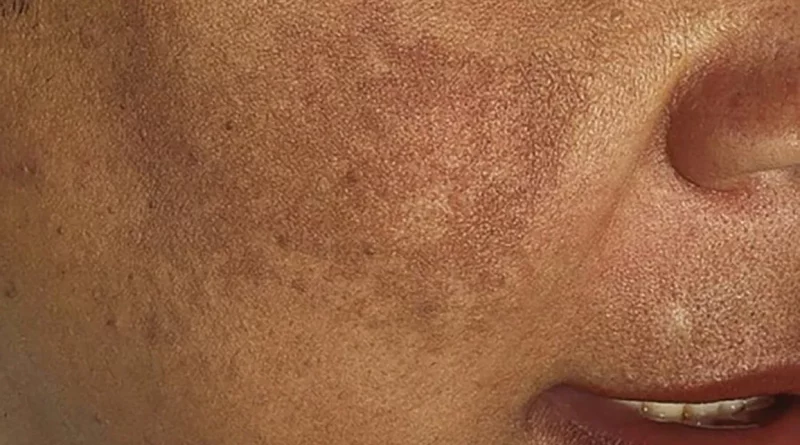I Need Melasma Treatment: What Treatments are Best for Melasma on the Face?
Melasma is a chronic skin condition that causes brown or gray patches on the face. Though it can occur in other parts of the body, it is most commonly found on the cheeks, nose, forehead, and upper lip.
While melasma is not harmful, it can be very upsetting for patients thus making timely treatments for specialist clinics like One Face Skin & Aesthetics Clinic almost mandatory. The patches are often large and visible, and they can be difficult to cover up with makeup.
As a result, melasma can cause significant emotional distress. If you are struggling with melasma, it is crucial to seek professional help. A dermatologist or qualified plastic surgeon can develop a customized treatment plan that will help you manage the condition and improve your quality of life.
What is the fastest way to Cure Melasma on Face?
When it comes to treating melasma on the face, there is no fast or definitive cure. However, some treatments have proven more effective than others in tackling this frustrating condition.
One commonly used treatment option is hydroquinone, a skin-lightening agent that works by reducing the appearance of dark patches and discoloration on the face. This medication can be applied directly to the affected areas in lotion, cream, or gel.
Other possible treatment options include chemical peels, microdermabrasion, or laser therapy, though these approaches may take longer to show results and are often more costly than hydroquinone. Ultimately, the best approach to melasma will depend on a person’s individual needs and preferences and any underlying medical conditions that may be contributing to their condition.
Still, with a combination of modalities and ongoing long-term therapy, most people with melasma can significantly improve their symptoms. Do not hesitate to speak with your dermatologist about the best treatment plan for you.
What Makes Melasma Worse?
If you’re struggling with melasma on the face, you obviously wouldn’t want to get closer to anything that may make it worse. Therefore, you could be wondering; what actually makes melasma worse?
One of the main factors that can make melasma worse is sun exposure. This is why people often notice that their symptoms are triggered when exposed to large amounts of sunlight for extended periods of time.
In addition to sun exposure, very strong artificial lights, such as those used in tanning beds or laser treatments, can also exacerbate symptoms of melasma by causing additional oxidative stress on the skin.
If you are suffering from melasma and want to reduce your symptoms, it is important to protect your skin from both natural and artificial sources of light, especially during peak UV hours. By avoiding overexposure to the sun and choosing appropriate skin care products and treatments, you can keep your melasma under control and prevent it from getting worse. Here are five more tips for managing melasma:
- Wear a broad-spectrum sunscreen with an SPF of at least 30 every day, even on cloudy days: One of your best bets for managing melasma is to protect your skin from sun exposure as much as possible. This means using a broad-spectrum sunscreen with an SPF of at least 30 on a daily basis, even when the weather isn’t sunny. Sunscreen will not only help prevent new dark patches or discoloration from forming, but it can also help reduce the appearance of existing melasma.
- Avoid the use of harsh skin care products: Another important tip for managing melasma is to avoid using harsh skin care products, such as those containing retinoids or enzymes. These ingredients can irritate the skin and make symptoms worse. Instead, opt for gentle, non-abrasive products, such as moisturizers and natural serums.
- Limit times spent in the sun and wear a wide-brimmed hat and sunglasses when outdoors: In addition to using sunscreen, it’s also crucial to limit your time spent in the sun. Try to avoid spending too much time outdoors during peak UV hours (11 am-3 pm), and be sure to wear a wide-brimmed hat and sunglasses for added protection.
- See your dermatologist regularly for ongoing treatment and management: If you suffer from melasma, it’s important to see your dermatologist on a regular basis for ongoing treatment and management. Your dermatologist can recommend the best skin care products and treatments to help reduce the appearance of melasma and prevent it from getting worse.
- Be patient: It can take time to see results from melasma treatments, so don’t give up if you don’t see improvement immediately. Just keep following your skincare routine and be patient!
These are a few of the best tips for managing melasma. If you follow these tips, you should see a significant reduction in your symptoms and be able to keep your melasma under control.
Where can I get Melasma treatment in Singapore?
If you are looking for effective treatment for melasma in Singapore, there are many options available. Many dermatologists and skin specialists offer in-office procedures such as chemical peels or laser treatments to help reduce the appearance of melasma.
Additionally, many dermatologists will also prescribe lightening agents or other topical treatments to help alleviate the symptoms and prevent further damage. If you are interested in exploring your melasma treatment options in Singapore, one good place to start is with One Face Skin & Aesthetics Clinic.
This reputable clinic is home to some of the leading experts in skincare and dermatology, and their staff can work with you to develop a customized treatment plan that addresses your unique needs and concerns. Whether you need minor intervention or more intensive treatments, the team at One Face Skin & Aesthetics Clinic has the expertise and experience to help you achieve long-lasting results. So if you’re ready to take control of your skin health and revitalize your appearance, contact One Face Skin & Aesthetics Clinic today! Call: +65 6222 2262.
Final Thoughts
Even though having melasma on the face can be frustrating, there are a number of treatments available that can help reduce the appearance of this condition. Be sure to follow the tips for managing melasma listed above, and you should see a significant improvement in your symptoms. Remember to see a specialist if your symptoms are really bothering you. They can help develop an effective treatment plan that addresses your unique needs and concerns.
One Face Skin & Aesthetics Clinic
1 Tras Link, #02-01 Orchid Hotel, Singapore 078867
+65 6222 2262




